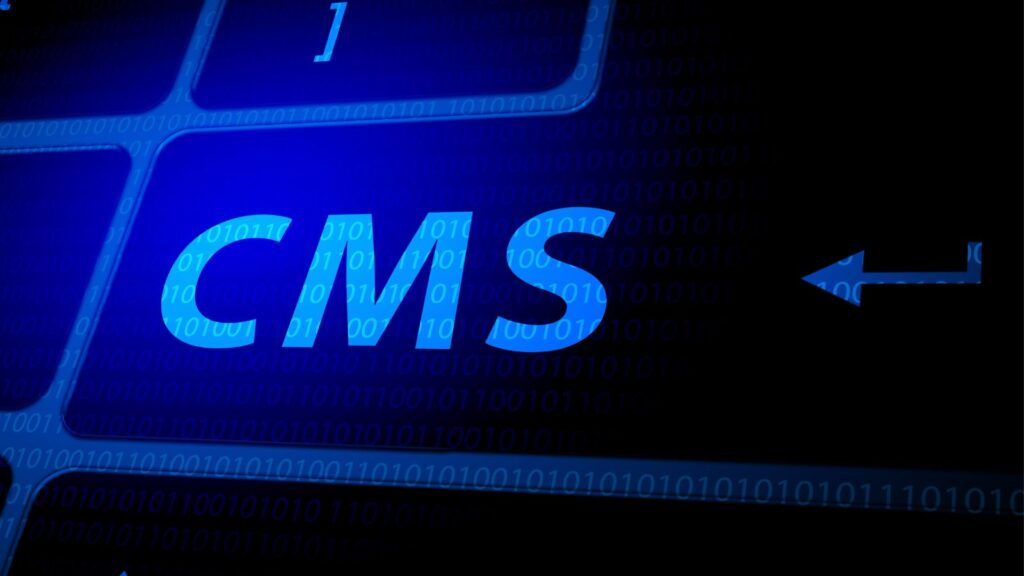
One of the intended freedoms of headless CMS architecture is flexibility untethered to templates, only tethered to structured content and the APIs used to display it. However, only with real-time content updates can such flexibility be had in increasingly digitized worlds. A CMS that updates your content post-launch or on a periodic refresh still creates operational redundancy rendering it at a need-based frequency instead of what a user might need in that moment. Real-time content updates expand what it means to be “headless” beyond the decoupling of resources and presentation to make instant publishing, omnichannel publishing and engaging digital experiences without delay. Everything is time-sensitive. To be truly headless requires something beyond decoupling. It needs to be timely.
What Headless Means Beyond Decoupled Architecture
The most fundamental element of what a headless CMS is, is decoupled. The content layer is separate from the presentation layer. That said, the CMS is only headless in the most strict of terms when content does not auto-dispatch to any output destination. When content still needs certain renderings, when it must be polled via API constantly, when caches need to be generated and sent back, then this is not headless; these are CMS-bound assets. When editors make instantaneous changes, status updates, or transformations are treated like microservices across digital properties and apps. If something is published and it needs to be rendered on a live homepage, for example, as well as a redirection to a discount on an entry store page, in a news ticker feed, or as a responsive marketing effort in the storefront, then the instantaneous change allows the CMS to feel alive instead of stuck. All the wheel spinning that a traditional CMS does not allow becomes optional unless there are caching layer infrastructures that prevent real-time generation. To explore a CMS that embraces this level of real-time flexibility, get started with Storyblok, a headless solution designed for dynamic, modular content delivery across all channels.
Triggering Actions with Webhooks
Webhooks are the means of instantly pushing information to the audience entity. A webhook is merely an automated message sent from one application to another when something occurs. Therefore, webs are the response to actionable items such as create, update and delete. For example, instead of waiting for audiences and applications to continuously ask a headless CMS whether something has been published (i.e., are there any articles published? Did x delete? Is there an updated image for y?), using a webhook can inform the front end via APIs or even serverless functions that something has changed. For example, when an editor publishes an article, a webhook might trigger a cache purge in one application or revalidation for a static site so the most recent article can display. On an enterprise level, this push notification system bolsters opportunities for leaner systems while conveying information in real-time.
Utilizing Frontend Architectures that Accept Real-Time Updates
To use these real-time capabilities effectively within products and solutions, frontend architectures must welcome real-time triggering and rendering. For example, server-sent events (SSE), websockets and GraphQL subscriptions foster live connections between front-end experiences and backend activities. Thus, they also ensure that something that has been adjusted does not need a full page reload to see it reflected on the browser or application interface. Industries that benefit from this functionality include sports that refresh scores regularly, finance in stock tickers, live blogs for timelines or customer support dashboards where data must continuously refresh to create meaning. When products can integrate headless CMS content with constantly refreshing streams of data, brands create amazing applications and user experiences.
Editors Don’t Need Deployments as a Dependency
One of the most frustrating limitations of a non-dev team relying on a traditional static site is needing developers (or a deployment pipeline) to publish. Even with a headless CMS, if a website still exists with a build process required by continuous integration (CI) tools, it won’t be able to display changes immediately. Instead, real-time content will require deployment via API or serverless, after-the-fact. With a headless CMS and all the integrations configured correctly, however, editors have the ability to take content they want to go live and, within seconds after hitting “publish,” get it visible which does wonders for speed to market and editorial confidence.
Real-Time Publishing Allows Multi Channel Sync to Happen in the Moment
The whole point of a headless CMS and an API-driven approach is to deliver content omnichannel. Therefore, with real-time publishing, you can achieve multi channel sync in the moment. Whether you’re using a mobile application, web browser, voice application, or digital display system, you can guarantee that every content endpoint receives something at the same time. This is important because for time-sensitive projects availability of product, promotional discounts, live services, and upcoming events it needs to be simultaneously accurate everywhere. This is one reason why instant publication reduces error and improves customer experience across the board no matter the channel.
Cache Invalidation Offers Fresh Delivery in Real-Time
The most challenging aspect of real-time publishing might be the cache purging. While excellent caching needs to happen for performance, sometimes it prevents something from being seen for too long. However, a headless CMS with webhooks and edge caching can, at times, require developers to purge/revalidate more intentionally. For example, once you publish a new blog post, you may want to cache certain links you post so the blog index page and the blog post detail page can be purged/revalidated while other configuration links and the homepage cache can remain untouched. This allows you to deliver things in real-time without fear.
Fully Automating Workflows for Content Ongoing Efforts
If something can update in real time, then it can be published in fully automated efforts. Editors set the rules in the CMS that a finance update is an additional piece of content to syndicate, add metadata, require translation efforts, and make offers to branding applications. These are the kinds of rules headless CMSs facilitate when integrated with multi-faceted solutions like Zapier, Make or proprietary APIs. The fewer human hands involved, the fewer mistakes and slowdowns but also, the more uniformity across developments, which is crucial within enterprise-level organizations with vast amounts of content and multiple stakeholders to please.
Monitoring and Debugging Real-Time Systems
If a real-time content publishing program exists, one necessary element for reliable operations is observability. This means that the systems must be monitored for webhook success or failures, appeals, response rates, caching, and other physical manifestations or non-manifestations of content being delivered to endpoints. When a user fails to see their update when it’s supposed to be there, observability via logs and performance dashboards can show whether the webhook failed, if the frontend cached incorrectly, or if the API integration was misconfigured. By adding this level of transparency to the content delivery process, teams can trust their systems operate in real time, and at the same time, respond to any issues in the blink of an eye.
Validating Real-Time Personalization at Scale
Not all updates need to be for content; once a system has the ability to deploy real-time updates at scale, it can also deliver real-time personalized experiences. For example, if a CMS integrates with user experience analytics or customer data platforms (CDPs), it can push updates based on live activity. A retail homepage can change product suggestions mid-checkout once someone completes an order, or a news app can feature different trending topics based on a user’s general interests. However, this requires a true headless CMS as well because such real-time updates require a composition of updated structures to integrate with real-time user data at that instant to create suggestions or new offerings.
Future-Proofing Your CMS Infrastructure
Real-time capabilities are a standard prerequisite of CSS systems and not merely a plus. Today’s consumers expect rapid, relevant, and engaging digital experiences, meaning instantaneous updates, seamless engagements, and hyper-personalization must be de rigueur. Thus, your CMS platform must adapt to such future-oriented expectations; by investing in real-time infrastructure like webhooks, live data connections, and performance-oriented caching, you ensure that your headless CMS will remain flexible and expandable for the future. You’ll have content architecture poised to connect with anything from experiential AI connections to immersive, new-age applications down the line.
Strengthening Editorial Workflows with Real-Time
When everything can be updated in real time across various environments, editorial teams benefit from better collaboration. Writers, editors, designers, and translators no longer have to wait for deployment cycles to view their completed work or provide final feedback. The ability to go live means that teams can work side by side, concurrently previewing and tweaking assets as content feeds automatically to production environments. This boosts internal workflow efficiencies, minimizes the need for extended revision cycles, and fosters a flexible and agile attitude toward publication and that attitude is critical for content houses across newsrooms, marketing teams, and e-commerce environments needing regular repetition.
Building User Trust Through Accurate Timeliness
There is nothing worse for user discontent than old information or inconsistent data across digital channels. With the right CMS, real-time capabilities and access mean that updates required based on time, corrections, and information sensitive to time, can be instantly pushed to every required digital channel. Whether product inventories change overnight or typos need fixing in blog posts or emergency communications need dissemination, the more a CMS allows for real-time publishing, the better control brands have over their digital personas. For brands that suffer from trust issues (finance, healthcare, travel), real-time capabilities become essential; the right information at the right time can determine if a user continues on to purchase.
Real Time Updates for Support Headless Commerce
With a headless commerce solution, everything from inventory to pricing to limited time offers needs to update in real time to reflect what’s going on in the back end. Real time updates from a CMS or real time headless commerce means that product descriptions, out of stock messages, limited time offers or sale banners are visible on the front end instantly without delay which prevents customers from being in overselling situations because of slow moving updates. At the same time, real time updates allow brands to take advantage of flash sales and limited time offers without worry of a lapse for instance, updates can go live the moment a customer purchases something or seconds before a determined expiration. Furthermore, real time updates allow merchants to play around with where products are situated on pages and pricing efforts so A/B testing can happen without the need for full page refreshes.
Ability to Deliver Real Time at Scale
Real time updates can also be delivered at scale based on the necessary infrastructure in place to support global audiences. When headless CMS updates are combined with edge networks and CDNs, an update can go live across the world in seconds regardless of distance. News that emerges in one country can be updated for one region in seconds so that regionally based offerings do not confuse other audiences. Similarly, international efforts can go live at the same time as real time publishing efforts. As long as cache invalidations are established with proper multilingual workflows, real time updates occur without any issues.
Conclusion: Making Real-Time the Standard in Headless CMS
Real-time content updates transform a headless CMS from a static storage facility to a living, breathing content machine that updates in real-time to serve businesses and their end-users. There’s no more waiting, no more build cycles, manual deployments, or scheduled syncs. When teams hit publish, they see changes across all digital properties immediately. This enhances operational efficiencies and empowers editors and marketers no longer must wait for developers to push something to production or for a staging environment to catch up.
For the end user, real-time content updates ensure that no matter how many versions there are of the website, mobile application, kiosk, smart device they’re all showing timely, accurate information, which is particularly useful for breaking news, sports scores, flash sales, or updates on product availability. The more responsive the solution, the better. In addition, this breeds trust, as people wonder if the first time they see something is the correct version and how such information matches across platforms.
From a developer perspective, real-time content updates occur thanks to webhooks, GraphQL subscriptions, or serverless functions that trigger front-end applications to respond to back-end changes in an instant. When compounded with smart rendering logic coupled with approaches that acknowledge caching, those properties most frequently updated across users perform quickly. Real-time content updates help avoid stale content, acknowledge personalization efforts and let experiments run without fear of slow loading.
In a world where everything happens immediately, making a CMS headless is more than just decoupling technology; it makes the CMS responsive and aware enough to render in real-time. The businesses that embrace this solution will find long-term digital adaptability, responsiveness to demand sometimes even before it happens and constantly renewed interactions that feel alive and fresh. Why should your CMS have to play catch-up when the answer is real-time?








